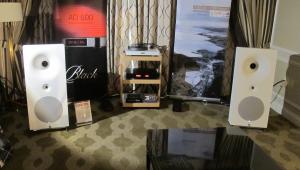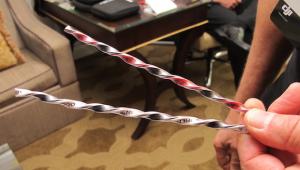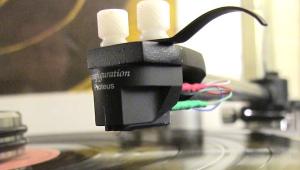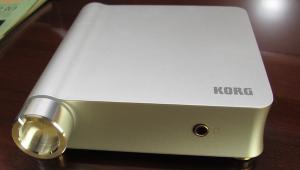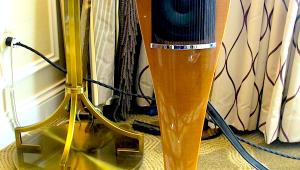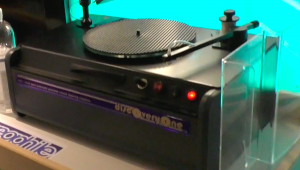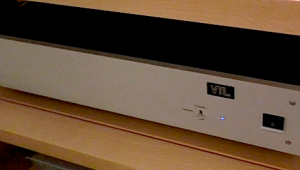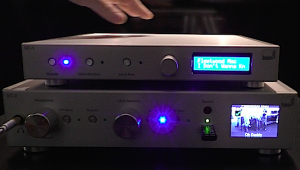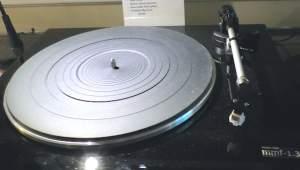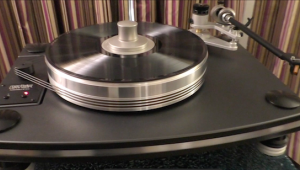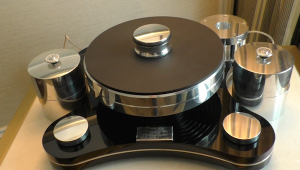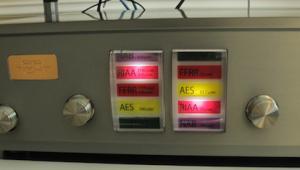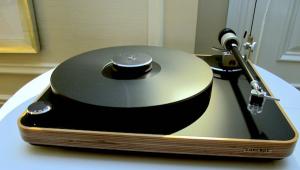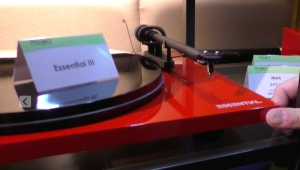I picked up an SL-1200 MkII from KAB in Plainfield, NJ in 2008 or so. It had a few of his mods installed (not sure if they matter, only one I've owned) and someone bailed on the order so it only ran me about $500 from his clearance page as I recall. Been running it with a DL-103R for many years now and thoroughly enjoying it. If I'm going to pony up $2,000, though (which the original was selling for from B&H before they finally went OOS for good), I want it to look the part and dress up a little.
Technics Introduces Appx. "half-priced" SL-1200 GR Direct Drive Turntable
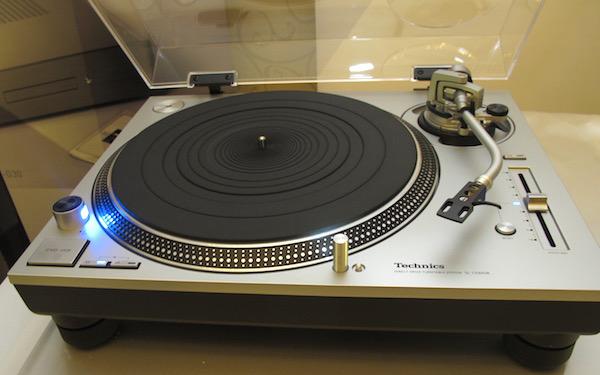
The new SL-1200GR gets to the approximately $2000 price point mostly by replacing the magnesium tone arm with one of aluminum and by replacing the motor with one of a less complex design, the details of which are best covered in an upcoming review of the SL-1200G. The platter is somewhat lighter, and there are other changes made around the margins, but otherwise, in terms of features and functionality the two turntables are identical.
However, while skeptics, like the New York Times' knucklehead reporter who covered the 1200 in the paper's business section and got the price wrong of the SL-1200G while misunderstanding the new design's significant upgrades, AnalogPlanet readers understand the significance of "a new motor" and the other aspects that resulted in last year's re-introduced SL-1200G.
Both of these SL-1200s are essentially hand-built in Japan. Watch for the SL-1200G review soon on AnalogPlanet. As I remark in the video, Technics' choice to maintain the original SL-1200's industrial design is a double edged sword: skeptics and knuckleheads think the new 1200 is the same turntable as the old one with a jacked up price, while ditching the classic look would have resulted in a loss of tradition and continuity. i think Technics was correct to keep the classic architecture and significantly upgrade the design and build quality.
- Log in or register to post comments


... offering a fluid damper for the tonearm, such as that KAB sells as an aftermarket accessory or SME has available for their arms.

... SL-120GR model without the tonearm.
Another option is the EVOke mod by Timestep with an SME Series IV tonearm.

Yes indeed...I read the article in the NY Times last week commenting to my wife "It might help if they assigned the story to someone who knows what the f**k he's talking about"....Here's a link to the story;
http://www.nytimes.com/2017/01/01/business/panasonic-technics-hiphop-tur...
The writer kept trying to make the case that by Turning it's back on the 1200's hip-hop legacy they were engaged in misguided marketing.....C-L-U-E-L-E-S-S....

It makes no pretense of judging the turntable's merits...it is really an article about the choices made in marketing an interesting, retro product, nothing more.
The DJ reference is correct though. I often wondered why direct drive turntables existed at all -- there is nothing they can do that cannot be accomplished with belt drive except introduce cogging and other nasties which a belt isolates. I finally learned: direct drive accelerates faster, almost instantly. That makes it a DJ favorite since they need to start and stop records, inject samples into other songs. But it is of no benefit to an audiophile.

There are myriad advantages for audiophiles, not the least of which is never needing to worry about belt replacement or rim drive alignment again.
I still wish Technics were willing to OEM the motor so that VPI could make a reasonably priced version of the Classic Direct.

An Absolute Sound interview (http://www.theabsolutesound.com/articles/ahc-talks-with-vpi-founder-harr...) starts with this question and answer between Anthony H. Cordesman and VPI founder/turntable designer Harry Weisfeld:
AHC: "Why go to direct-drive after years of belt-driven systems?"
Harry Weisfeld: "Cartridges are velocity-sensing devices—if the speed is not dead on you begin with a problem! After studying the operation of belt-drive ’tables for 30+ years and the sound of direct- and rim-drive ’tables it was determined that the only way to get perfect (or as near to perfect as possible) speed accuracy was to go direct-drive. Spending many years listening to Denon DP-80s, JVC TT-101s, Kenwood LO-7s, etc. hardened my viewpoint on this."
The SL1200 was not designed for DJs in dance clubs. The DD concept began with Panasonic's redefinition of a professional broadcast quality turntable in 1969, the SP10. Three years later, Panasonic (Technics) introduced a high end consumer grade version, the SL1200. It had speed controls in the form of small dials for audiophiles and musicians who wanted to correct off-speed mastering (e.g., side 1 of "Kind of Blue") and easy pitch-matching for playing along with records--an easy fix compared to getting your piano tuned. An indicator of the SL1200's serious intentions was its alternative, the SL120, which came with an SME armboard instead of the Technics tonearm. The SL1200 was $350 when introduced in 1972, which, adjusted for inflation, is equivalent to over $2020 in today's money. It was an in-home high end turntable.
It wasn't until 1975 that dance clubs in New York started replacing their Thorens turntables with the SL1200 for its superior beat-keeping, propulsive bass, and ruggedness. They were *adopted* for dance club use. After four years of proof-of-concept, Technics released the SL1200 MkII, which had subtle features to accommodate dance clubs, most notably, the more user-friendly slider to adjust speed.
As for fast spin-up, yes, DD spins up faster than belt drive, but for DJ-ing, the spin-up champ was idler drive, which was totally instantaneous. SL1200s take about 1/2 a turn to get to speed, which is why the turntables started featuring a hard felt slip mat to let the platter come up to speed before releasing the record to play. DJs were willing to switch to slip-matting because the Technics DDs were superior in speed accuracy and an enormous leap in signal-to-noise ratio. They were dead quiet compared to the pro idler drives of the day.

And of course the writer didn't even mention the Panasonic PLX-1000 which came out in 2014 and which, according to Herb R. at Stereophile is a great sounding TT going for a street price of around $570-$650....

The Plx 1000 is distributed by Pioneers DJ division. I followed H. Reicherts recommendation and did not regret it.

Yes...correction Pioneer not Panasonic

The writer, Jonathan Soble, specializes in Japan-related business news (that's why he didn't even bother to check the US pricing). You can't really expect him to care about audiophile issues. Still, he did make several factual errors. It's annoying that, unlike most NYT writers, you can't even send him an email.

On a brighter note, I scored a SL-1200GAE, and absolutely love it. Setup is so easy, playing record after record is a pleasure, and the removable headshell makes changing cartridges a doddle, as the Brits say. I have found that upgrading the headshell is most worthwhile, and also tweaking the torque manually is beneficial (as described in a reader comment on the Stereophile website). I look forward to Mikey's review.

It is a beautiful sounding product and well made. Glad to see they are offering a lower price point. Love these products.

Mikey, did you ever get a chance to check out that SL1200GAE at AXPONA, the one I mentioned was mistracking badly with the Ortofon cart they had mounted on it? To me it looked like the back end of the arm was down way too low, but it could have been the angle (and the "do not touch" signs plastered all over their equipment). I remember the three of us in our group kind of looking at each other in bewilderment when the sibilance was so bad on the first cut on the record they used as a demo.

Thank you Michael for your coverage as always. This is such a delight to see not only from a quality point of view, but one of factual nostalgia where old school really does rule. As a guy who appreciates the great gear of the early 70s with Technics being one of the big names, this is delightful to see them investing or re-investing into the gear and not just keeping the standards, but markedly improving things. Also to have them still built in Japan and the attention to quality is icing on the cake.
The gear is just as solid as it was back in it's hey day, built like a brick chicken house. I love what they did with the 1200-G in making a $2000 version while keeping what appears to be at least 80% or better of the master $4k version, now that is value! I also like how they addressed something that nobody else has in the last 40 years and that is the headphone jack. It is not a jack but a separate amp built in, brilliant!! That stands out in these days of headphone jacks being more cosmetic than functional. Well done Technics!

...my old friend Bill Voss. I worked with him over 30 years ago at Sounds Alive in Connecticut. Great guy who knows his stuff.
